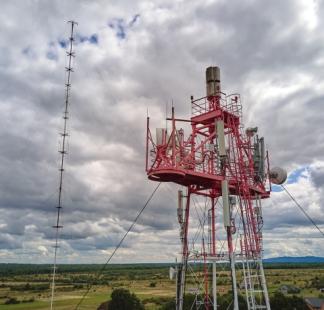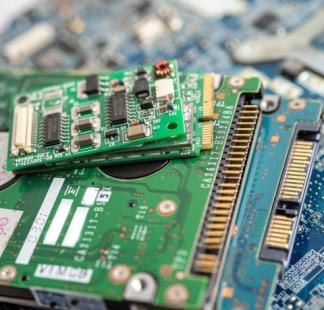Geneva
Switzerland
- Carla Licciardello
- Sebastien Peytrignet
- Attila Horvath
- Carolina Anselmino
Introductory
Does this course have any restrictions?
Description
As part of the project on capacity development to accelerate school connectivity under the umbrella of the ITU Academy and through the Giga Learning Hub, ITU will host a face to face training to introduce the methodology to measure gaps in ICT infrastructure and for connectivity business planning. It aims to improve the theoretical and practical skills of participants in collecting ICT infrastructure data, identifying underserved areas, applying GIS tools, and using connectivity models to test and compare selected connectivity scenarios.
During practical hands-on sessions, participants will learn how to source and prepare their own data using data dictionaries and common standards. The sessions will cover topics such as exploratory data analysis, data validation, visualization, and more advanced topics like visibility analysis for point-to-point connectivity and fiber path analysis.
The training will involve practical sessions where participants will gain hands-on experience using QGIS and Jupyter Notebooks, working through real-life case studies related to school connectivity.
Data analysts, telecommunications professionals or policymakers with an interest in infrastructure mapping for connectivity projects.
Participants from the following beneficiaries’ countries (2 per countries) from the Giga initiative are entitled to apply: Barbados, Belize, Benin, Bosnia & Herzegovina, Botswana, Brazil, Dominican Republic, El Salvador, Guinea, Honduras, Kazakhstan, Kenya, Kyrgyzstan, Lesotho, Mongolia, Namibia, Niger, Panama, Rwanda, Sao Tome and Principe, Sierra Leone, South Africa, Trinidad & Tobago, Uzbekistan, Zimbabwe, Anguilla, Antigua and Barbuda, British Virgin Islands, Commonwealth of Dominica, Grenada, Montserrat, Federation of Saint Kitts and Nevis, Saint Lucia, Saint Vincent and the Grenadines
- Number of available places for the cohort: 35
Members of the above-mentioned target population are invited to apply for the training if they meet the following criteria:
- Basic proficiency in Python programming is encouraged, but not strictly required.
- Possess a fluent level of English.
Selection criteria
- Selection will be conducted by the course organizers, who will consider the above entry requirements along with an analysis of the application questionnaire and the recommendation/motivation letter of each applicant.
Technical requirements
Participants must bring their own laptop and must have the following software installed.
Software requirements:
- QGIS version 3.34.9 'Prizren LTR' (long-term release): For Windows, Mac and Linux Operation Systems
- GRASS 7 plugin : https://docs.qgis.org/3.28/en/docs/training_manual/grass/grass_setup.html Start QGIS Desktop. In the "Plugins" menu select "Manage and Install Plugins". GRASS 7 is core plugin, so it is already installed, but need to be enabled. Check the plugin to enable it.
- Software to read and edit .xls, .xlsx, .csv files (e.g., MS Excel).
- Python (at least version 3.9)
- Conda or Miniconda
- An IDE such as Visual Studio Code
Note: Assistance with the installation of Python, Conda/Miniconda, and the IDE will be available on the day of the training.
Hardware requirements:
- Laptop with either Windows, Mac or Linux operating system
- RAM – 8GB of RAM or higher is recommended for using QGIS and avoiding system crashes.
- CPU Speed – 1.8 GHz is recommended, although not required. QGIS might run slow at lower levels.
- Hard Drive Storage – This is dependent on the datasets, 1GB would be enough in most cases.
Upon completion of this course, participants will be able to:
- Describe the essential concepts about working with geospatial data
- Apply powerful open-source tools to perform analysis related to school connectivity.
The training will take a hands-on, interactive approach with a mix of live instruction and practical exercises. Participants will learn key concepts through instructor-led tutorials, followed by guided activities where they can immediately apply what they've learned. To reinforce learning, the course will include quizzes and assessments to track progress.
The assessment will be done using quizzes at the end of each session.
Activity
Weighting (%)
- Quiz on GIS concepts and data types = 25
- Exercise on benchmarking the infrastructure gap = 25
- Quiz on the infrastructure planning framework = 25
- Exercise on broadband network planning = 25
A total score of 70% or higher is required to obtain the ITU certificate.
- Introduction to the course and getting to know the participants (their backgrounds and their objectives for the two days of training).
- Introduction to Geospatial Analysis and the QGIS software
- Introduction to Geospatial Data Types and the QGIS software
- Data collection for ICT infrastructure analysis and planning.
- ICT infrastructure data exploratory analysis.
- Benchmarking the ICT infrastructure gap using geospatial data.
- Data Visualization
- Broadband infrastructure planning framework
- Broadband network planning, part 1: proximity, coverage and demand analysis.
- Broadband network planning, part 2: visibility analysis for point-to-point connectivity.
- Broadband network planning, part 3: fiber path analysis.
- Broadband network planning, part 4: cost modelling.
Financial support available
The training is offered free of charge, travel and DSA will be covered for selected participants.
You will be able to apply for the fellowship when you submit your training course application.












